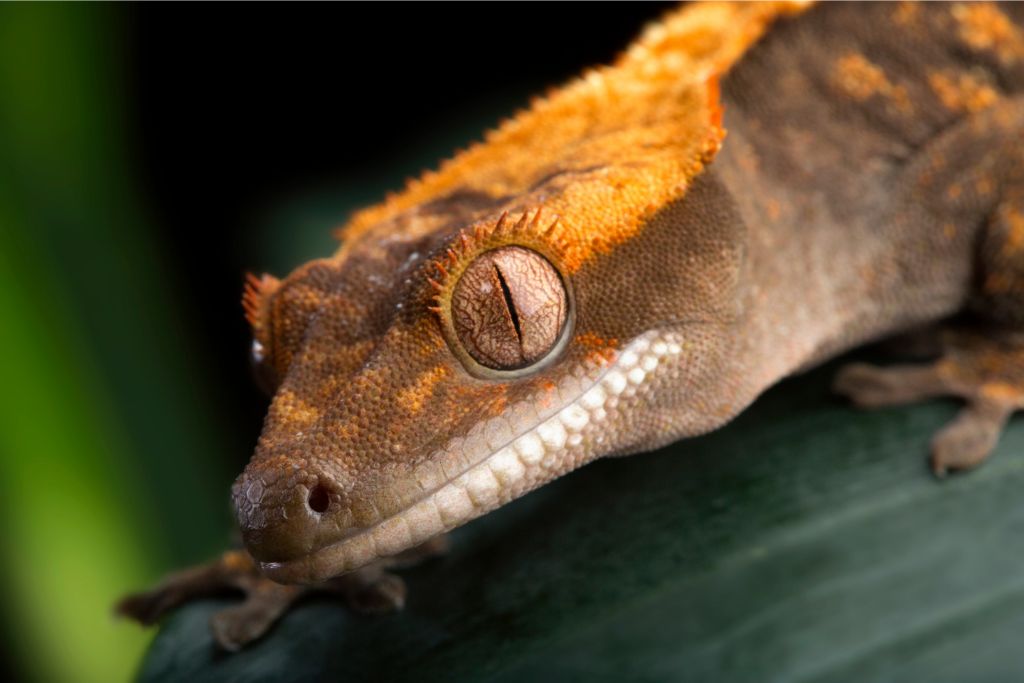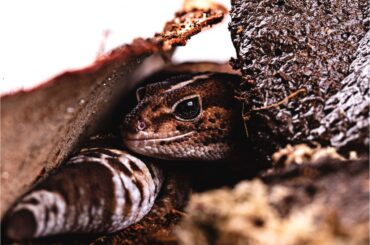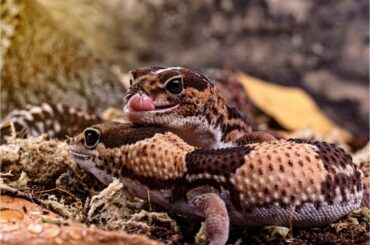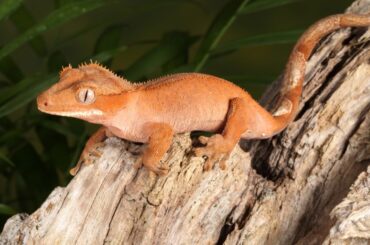What is the ideal temperature for crested geckos, and how can we set up the necessary temperature? Every crested gecko owner should ask these questions to protect their gorgeous pets. This detailed article covers establishing optimal crested gecko tank temperature.
This article will help you understand crested geckos’ temperature needs and find the right balance between warm and cool. The secrets to keeping these creatures happy and healthy will be revealed.
What Temperature Should a Crested Gecko Tank be?
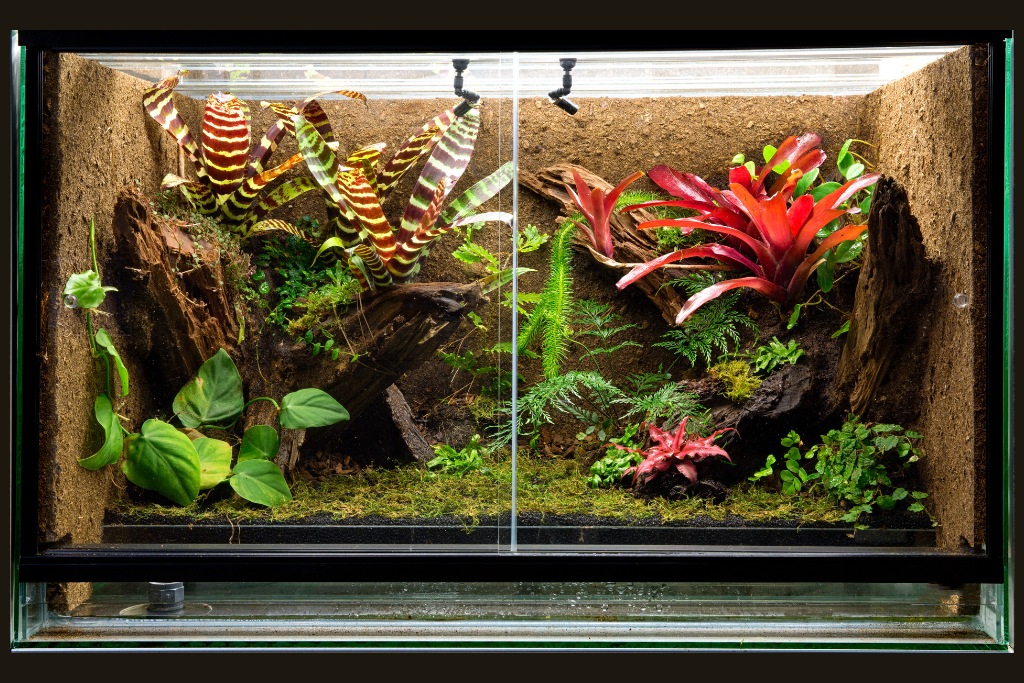
The ideal temperature for a crested gecko tank is usually between 71 to 80℉ (22 to 27°C). This range allows them to stay comfortable and active. If needed, a low-wattage heat light or under-tank heating pad helps keep their habitat warm. To keep your gecko safe from extreme temperatures, install a thermometer in the tank.
In terms of humidity, crested geckos require a humidity level of around 50 to 70%. This helps them shed their skin properly and stay hydrated. Apply water to their enclosure regularly with a spray bottle or use a humidity gauge to alter humidity levels.
It’s crucial to strike a balance – not too dry and not too wet – to keep your crested gecko healthy and happy. Remember, these little creatures thrive in a cozy, tropical-like environment!
What are the Ways to Control the Temperature for Crested Geckos?
Crested geckos need a cozy and stable temperature in their habitat to stay healthy and happy. Here’s how to control the temperature in their tank and when to adjust it:
Invest in a Reliable Thermostat
Select a high-quality thermostat with precise temperature control. To avoid unexpected temperature changes, this gadget automatically turns the heating source on and off.
Choose the Right Heating Source
Consider the heating source carefully. A ceramic heat emitter provides gentle, radiant heat, which maintains consistent warmth. Heat mats or low-wattage light bulbs are suitable alternatives. Make sure the wattage of the bulb is appropriate, as too much heat can harm your gecko.
Monitor Temperature with Precision
To ensure the habitat’s temperature remains in the ideal range, employ multiple thermometers. Place them at different spots in the tank, including the basking area, cool side, and hiding spots. This approach guarantees that the entire enclosure is heated uniformly.
Day and Night Temperature Variations
During the day, aim to maintain a temperature between 71 to 80℉ (22 to 27°C) to simulate their natural environment. For crested gecko night temperature, it’s acceptable for it to drop slightly, but it should never fall below 64℉ (18°C). Using the thermostat and timers can help achieve this balance.
Seasonal Adjustments
Remember that room temperature changes throughout the seasons. Adjusting the heating source may keep your gecko comfortable in winter and summer. You may need to boost crested gecko heat output in winter to compensate for colder room temperatures.
Gradual Temperature Changes
Crested geckos are sensitive to abrupt temperature shifts. Avoid making sudden adjustments, as it can stress your pet. Instead, introduce changes gradually, allowing your gecko to acclimate to the new conditions.
Employ a Timer for Consistency
Implementing a timer for the heating source can replicate a natural day-night cycle. This cycle helps regulate day-night temperature changes, replicating their native habitat.
Monitor Behavioral Cues
Observe your gecko’s behavior as an indicator of temperature satisfaction. If your gecko frequently hides or remains too active, it may be a sign of discomfort due to temperature issues. Adjust the settings accordingly, but monitor how your gecko responds to the changes.
What are the Equipment/Items Used to Manage the Temperature of the Tank/Habitat?
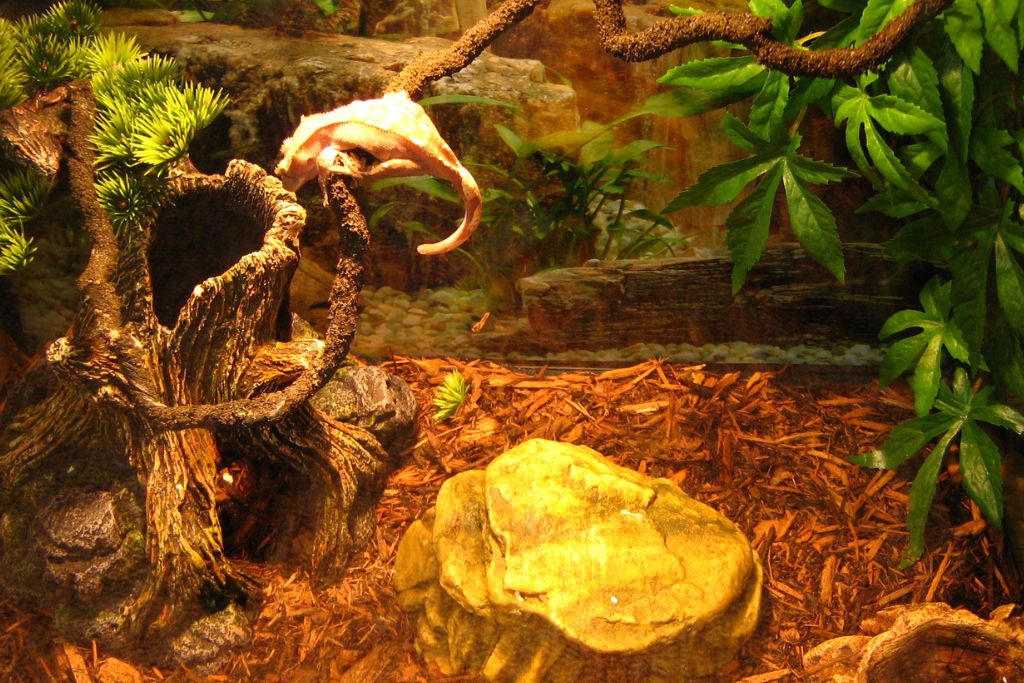
Before investigating crested gecko tanks or habitat temperature management systems, understand temperature control. Crested geckos are cold-blooded creatures, which means they rely on their environment to regulate their body temperature. Let’s dive into the equipment that helps maintain the ideal temperature for crested geckos:
Heat Lamp
A heat lamp is a crucial tool for maintaining the temperature in your gecko’s habitat. It’s like a special light bulb that emits warmth. This warmth is vital for your gecko because they can’t control their body temperature like we can.
They bask under the heat lamp to warm up when feeling chilly. You can adjust the distance of the light from the tank to control the temperature.
Under Tank Heater (UTH)
This is like a heating pad for the bottom of the tank. It’s like the warm floor in your home. The UTH sticks to the bottom of the tank, and it gently warms the glass. This warmth travels up, making a cozy spot for your gecko to sit on when they need to warm up.
Thermostat
Consider a thermostat that has a temperature control system’s “smart brain.” It monitors tank temperature and controls heat sources (light or UTH) on and off. This ensures your gecko’s home stays in the perfect temperature range, essential for their health.
Digital Thermometer
A gecko’s tank uses a digital thermometer, like one you could use while you’re sick. It offers a tank temperature number. You can monitor and ensure it’s always at the right temperature.
Temperature Controller
This is like a “temperature boss” for your gecko’s home. You can set your desired temperature, and the controller ensures it stays right. It’s like putting the temperature on your air conditioner at home. It helps you avoid your gecko getting too hot or too cold.
Heat Mat or Heat Tape
These are like big, warm blankets for the bottom of the tank. You stick them under the tank to keep it cozy. They come in different sizes and shapes, so you can choose the one that fits your tank best.
Infrared Thermometer
An infrared thermometer is like a magic wand. Point it at different areas of the tank to get the temperature without touching anything. It’s fun and easy to make your gecko’s habitat perfect.
Signs of Temperature-Related Stress or Issues
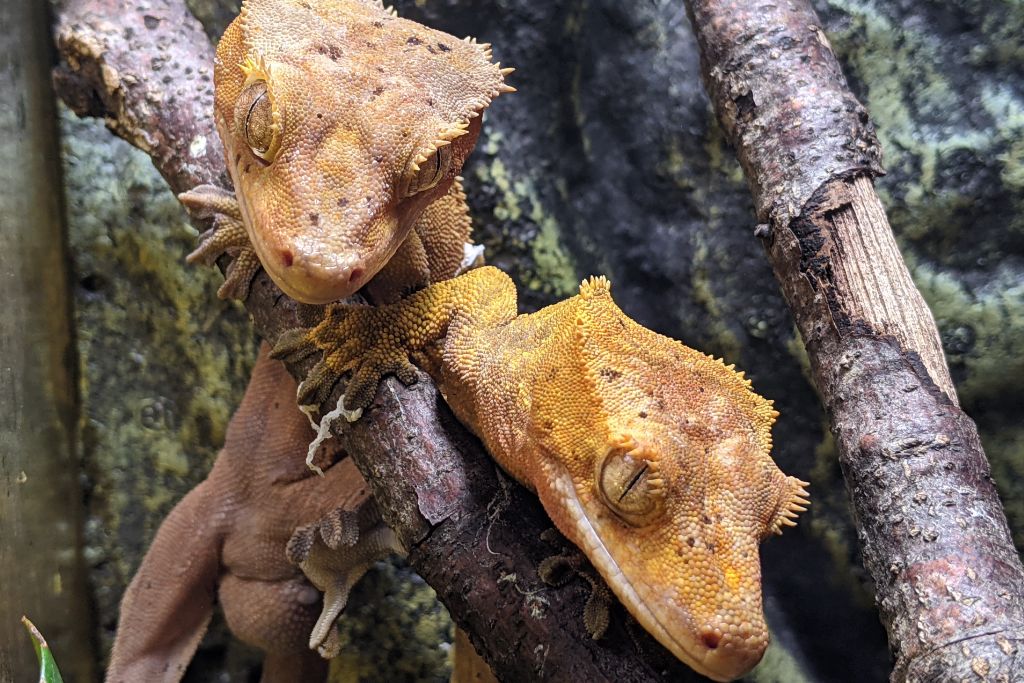
When our bodies face extreme temperatures, it can lead to discomfort or even health problems. Let’s explore some common signs of overheating and cold stress in crested geckos that you should be aware of.
Overheating
When crested geckos get too hot, they can become stressed. Here are some signs to look out for:
- Seeking Shade: Your gecko might try to find more excellent spots in its enclosure to escape the heat. This can be a sign that it’s feeling too warm.
- Lethargy: If your gecko seems sluggish or less active than usual, it could be due to overheating. They like to stay active, so a lack of movement can be concerning.
- Panting: Crested geckos don’t sweat like humans, but they may open their mouths and breathe rapidly when too hot. This is their way of cooling down.
Cold Stress
When crested geckos get too cold, they can also experience stress. Look for these signs:
- Hiding: Your gecko might retreat to hide more than usual. When they’re out, they seek shelter to stay warm, so that excessive hiding can indicate a problem.
- Reduced Appetite: If your gecko isn’t as interested in food as usual, it could be due to the cold. They need warmth to digest their meals properly.
- Dark Coloration: When cold-stressed, crested geckos may darken in color. This is a sign that they’re trying to absorb more heat from their environment.
Actions to Take
Temperature difficulties can be addressed in numerous ways for your crested gecko. Here are some actions to take:
Monitor the Temperature
Keep an eye on the temperature in your crested gecko’s enclosure. It should ideally be between 71 to 80℉ (22 to 27°C) during the day and slightly cooler at night. Use a reliable thermometer to ensure it stays within this range.
Adjust the Heating Source
If it’s too cold, consider adding a low-wattage heat source, like a ceramic heat emitter or an under-tank heater. Place it on one side of the enclosure to create a temperature gradient, allowing your gecko to choose its comfort zone.
Seek Veterinary Care
Consult a reptile vet if your crested gecko becomes lethargic, refuses to eat, or displays signs of disease due to temperature difficulties.
Conclusion
It’s crucial to emphasize the significance of maintaining the right temperature for crested geckos. These adorable reptiles thrive when their habitat is kept warm and cozy. This not only ensures their comfort but also helps them stay healthy and happy.
We must stress the importance of being responsible pet owners. Taking care of your crested gecko requires commitment and love. Providing them with a suitable environment, like the perfect temperature, is just one part of the equation.
FAQs
What Temperature is Too Cold for a Crested Gecko?
Crested geckos thrive at temperatures between 71 to 80℉ (22 to 27°C). Temperatures below 64℉ (18°C) can be too cold for them.
Do Crested Geckos Need a Hot and Cold Side?
No, crested geckos, like many reptiles, do not require a traditional hot and cold side setup like some other reptile species. They are naturally adapted to moderate temperatures in their native habitat of New Caledonia. Instead, they thrive in a more consistent, mild temperature range.

